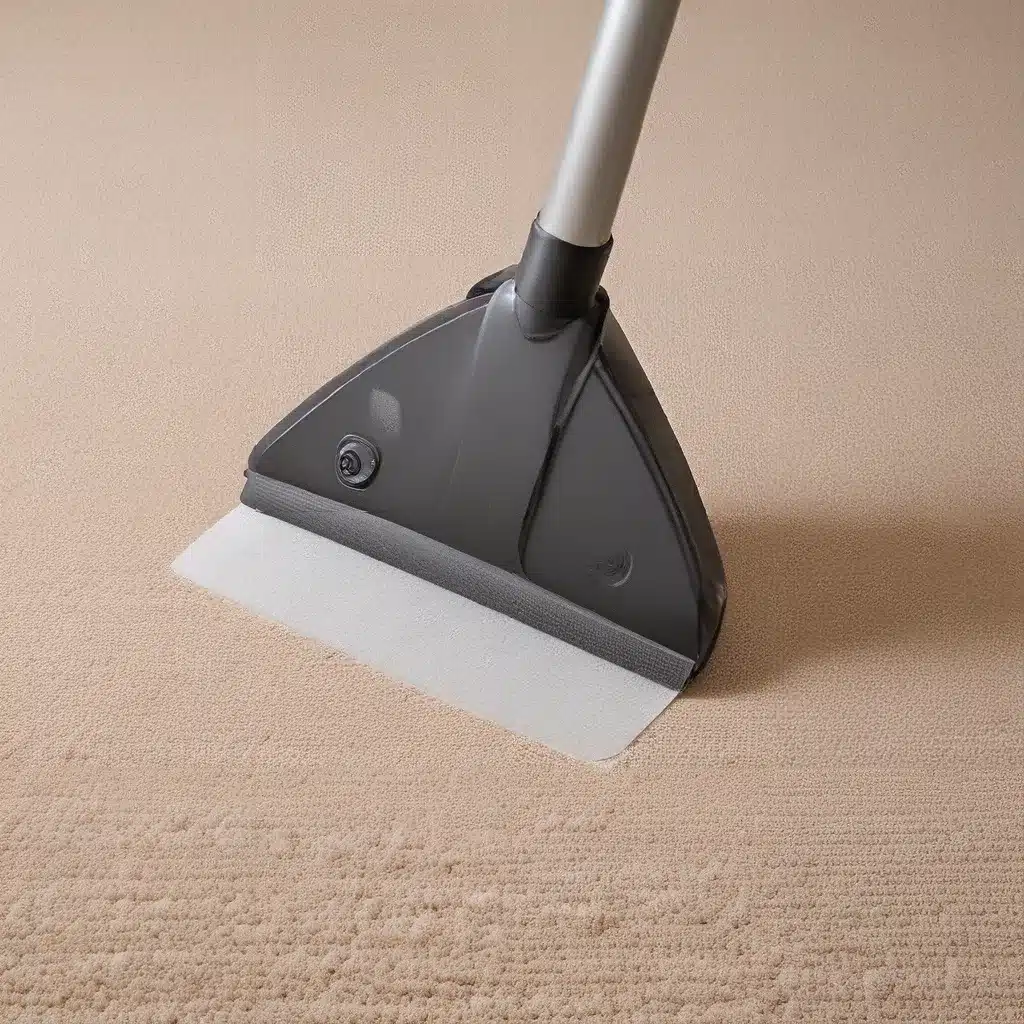
As a proud homeowner, I’ve learned the hard way that protecting your floors is essential to preserving your investment. Whether it’s a cherished area rug or the plush carpet in your home office, those surfaces can take a beating from everyday wear and tear. But fear not, my friends! I’m here to share some DIY carpet protectors that will help you keep your floors looking fresh for years to come.
The Perils of Chair Rollers
Let’s start with the bane of every rug and carpet owner’s existence: chair rollers. Those little plastic or rubber wheels can wreak havoc on your flooring, causing the dreaded “buckling, wrinkling, or worse.” I’ve seen it happen – that once-pristine carpet suddenly develops a gaping hole, all thanks to the constant back-and-forth of a rolling desk chair.
According to the experts at Rug Runner Biz, the problem lies in the way these chair rollers interact with the carpet’s latex backing. Over time, the constant rolling motion can actually break down that bond, leading to all sorts of unsightly issues.
The Trouble with Plastic Mats
So, you think the obvious solution is to simply slap down a plastic or rubber chair mat, right? Wrong! While this may seem like a smart way to protect your carpet, it can actually lead to even more problems, especially if your home is built on a concrete slab.
As the Rug Runner Biz blog explains, those plastic or rubber mats can actually trap moisture and alkali, causing all sorts of unsavory issues. We’re talking mildew, mold, and even damage to the concrete slab itself! Yikes, talk about a recipe for disaster.
The Breathable Solution
Okay, so we’ve established that plastic and rubber mats are a big no-no. What’s a carpet-loving homeowner to do? The key is to find a breathable solution that allows air and gases to circulate freely.
One of the best options, according to the experts, is a masonite or other densely-packed particle/veneer desk mat. These compressed wood mats let your chair roll with ease without causing any damage to your precious flooring. And the best part? They won’t trap any pesky moisture or alkali, keeping your floors in tip-top shape.
If a desk mat isn’t your style, you can also consider building a platform for your home office area. This not only protects your carpet, but it also adds a touch of style and definition to your workspace. Plus, it’s portable, so you can take it with you if you decide to rearrange your setup.
Protecting Wood Floors
But what if your home has hardwood floors instead of carpet? Well, the same principles apply. If your home is built on a concrete slab, you’ll want to steer clear of those dreaded plastic and rubber mats. Instead, opt for a breathable solution like a densely-packed area rug or even a platform.
As the Rug Runner Biz blog suggests, if you have an older home with pre-existing hardwood floors, you might want to consider getting rid of that carpet altogether and having the floors refinished. Not only will this add value to your home, but it’ll also give you a beautiful, protected surface to work with.
Identifying Moisture Issues
Now, I know what you’re thinking – how do I even know if I have a moisture problem in the first place? Well, there’s a simple test you can do to find out.
According to the experts at Rug Runner Biz, all you need is a piece of plastic wrap, some duct tape, and a keen eye. Just tape the plastic over a suspected problem area and wait a few days. If you start to see water droplets forming, then you’ve got a moisture issue on your hands.
Preventing Moisture Damage
Okay, so you’ve identified a moisture problem – now what? Well, the solution is simple: ditch the plastic and rubber mats and let your floors breathe. Whether you opt for a masonite desk mat, a custom platform, or a natural-fiber area rug, the key is to choose a material that allows air and gases to circulate freely.
As the FEMA guidelines suggest, proper ventilation and moisture management are essential for protecting your home’s floors and foundations. By allowing your surfaces to “breathe,” you can prevent the build-up of harmful condensation and alkali that can wreak havoc on your investment.
Protecting Rental Properties
But what if you’re a renter, not a homeowner? Fear not, my friends! The DIY carpet protector tips I’ve shared can still work wonders, even in a rental property.
As the Rug Runner Biz blog suggests, if you’ve already noticed a pesky powder or lump on your rental carpet, it’s best to remove the plastic mat and address the issue. While you may need to consult your landlord, there are options for cleaning or mitigating the damage, depending on the severity.
And remember, even if you’re renting, investing in regular professional carpet cleaning can go a long way in preserving the condition of your floors. After all, you want to get that security deposit back, right?
The Takeaway
Protecting your floors is no easy feat, but with the right DIY carpet protectors, you can keep your investment safe from the ravages of everyday wear and tear. Whether you opt for a masonite desk mat, a custom platform, or a breathable area rug, the key is to choose a solution that allows your floors to “breathe” and prevent the buildup of moisture and other harmful elements.
And remember, if you’re ever unsure about the condition of your floors, don’t hesitate to consult the experts. With a little bit of diligence and the right precautions, you can ensure that your carpets and hardwood floors stay looking their best for years to come.
So, what are you waiting for? It’s time to safeguard your investment and protect your floors with these savvy DIY carpet protector tips. Happy home decorating, my friends!

